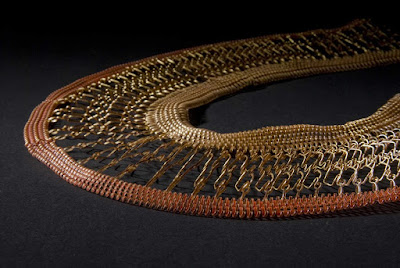The Visual Culture of Nigerian Politics: Police Detain(ed) Cleric over Goodluck Jonathan's Campaign Poster
Some while ago the Daily Trust reported that a prominent Sokoto-based scholar has been arrested on charges of defacing posters promoting the campaign of current president Goodluck Jonathan:
Police detain cleric over Jonathan’s posters
Daily Trust, Wednesday, 02 March 2011 00:00
Rakiya A. Muhammad, Sokoto & Misbahu Bashir, Abuja
Prominent Islamic scholar in Sokoto Sheikh Abubakar Jibril was arrested by the police on Monday afternoon and was flown to Abuja yesterday over what police sources said was the defacing of some campaign posters of President Goodluck Jonathan. The Sheikh, who is the Chief Imam of the Farfaru Juma’at Mosque in Sokoto, was arrested with his two sons, his driver and a domestic aide, according to relations and the police. Spokesman for the Sokoto police command ASP Al-Mustapha Sani said policemen on patrol arrested Sheikh Abubakar and the others while they were using black paint to deface the posters of the president and his deputy at some roundabouts in Sokoto metropolis at about 5pm on Monday.
Sani said they were arrested over inciting public disturbance and have been transferred to the Force Criminal Investigation Department in Abuja.
In Abuja, the Force Public Relations Officer DCP Olusola Amore confirmed that five people including Sheikh Abubakar were being held at the Force CID and that they were arrested for allegedly defacing the posters of the PDP presidential candidate and his running mate. He said they were also suspected of inciting dislike for Jonathan and of acts capable of fanning the flames of public disturbance.
[…]
But a civil society activist, Ibrahim Tudun Doki described the arrest as political intolerance by the Jonathan regime. Tudun Doki, who is a House of Representatives candidate of the Congress for Progress Change [CPC] recalled that General Muhammadu Buhari’s campaign billboard was destroyed in Port Harcourt, Rivers State last week and that the police did not arrest or charge anyone to court for the action.
[…]
Read the full article here:
I am not in a position to comment on the accusations or the political ambitions that may or may not have informed the whole incident. And I have been hovering about how to express my kind of perspective in a way that fit this blog. Let me try.
I am fascinated by the idea that authorities in Sokoto would accord sufficient significance to the disfigurement of the current president’s campaign posters to take such drastic action. My interest in the relationship between (aspects of) visual culture and politics predates these news. Visually one of the defining impressions of my spring/summer 2007 visit to Nigeria was the prevalence of murals of politicians alongside the roads on which I travelled. Even in what appeared to me more remote areas of the country, there was the occasional house on which the portrait of a politician had been painted (as well as those ‘decorated’ by an advertisement for, if I remember correctly, Simba Motors). During a stroll through Zaria’s old town I stumbled across the abandoned signs portraying politicians. What an effort and what skill invested into visual communications considering that I had been previously warned to expect an impoverished visual culture. It also highlighted that there was a political culture that employed visual means of communication. And, that is rather interesting. It contradicted some of the statements I had read in the limited body of literature that spoke about visual culture in northern Nigeria.
There are prominent historians of Nigerian arts who argued that Islam had prevented the development of ‘meaningful’ (whatever that means) traditions of visual arts in the region or that, alternatively, it had only sustained abstract, aniconic artistic traditions. Instead, incidents like this one suggest that, in addition to a lively visual culture of politics, there is a substantial investment in these images. Why else the drastic reaction? This iconoclasm, if that is what you want to call it, is not religious but political. Not unlike the global Muslim reaction to the Danish cartoons cannot be understood in religious terms only. As Jytte Klaussen has demonstrated the political context in which these images were published significantly contributed to the escalation of the affair. This is not to say that northern Nigerian visual culture is not influenced by the presence of Islam and prominent interpretation of its sources with regard to the arts. For example, it would be interesting to know why President Goodluck Jonathan has chosen to promote his campaign using music videos – including a short song in Hausa[1] but Ibrahim Shekarau hasn’t.[2] The answer is probably complex but I wouldn’t be surprised if (in the widest sense) religiously inspired attitudes towards music videos and the dancing they depict had played a (possible small) role here. But to restrict the discussion of visual culture in northern Nigeria to the religious argument, would clearly mean to miss important dimensions. And, surely, this incident is another reminder of just that.
[1] I got no political investment here on any side but I was too happy to find I had not totally forgotten Hausa not to link to it.
[2] Or did I just not find it on Youtube, correct me if I'am wrong! Pls. I’d love to know.






